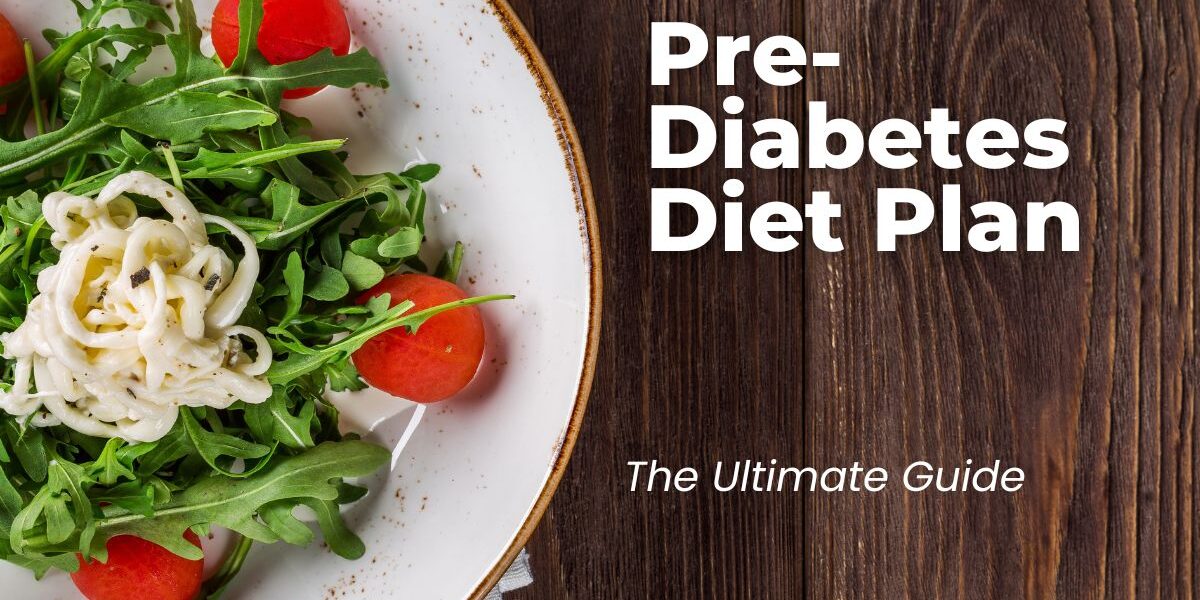Being diagnosed with prediabetes is a wake-up call, but it’s also an opportunity to take control of your health and prevent the progression to Type 2 diabetes. One of the most effective ways to do this is through carefully make a prediabetes diet plan. In this guide, we’ll explore what you should eat, what to avoid, and provide sample meal plans to help you manage your blood sugar levels effectively.
Understanding Pre-Diabetes
Pre-diabetes occurs when your blood sugar levels are higher than normal but not yet high enough to be classified as Type 2 diabetes. If left unmanaged, it can lead to diabetes, heart disease, and other complications. However, with the right dietary changes, you can reverse pre-diabetes or significantly reduce your risk of developing diabetes.
Foods to Include in a Pre-Diabetes Diet Plan
Focusing on whole, nutrient-dense foods is key to managing pre-diabetes. Here are some essential components of a prediabetes diet plan:
1. Fiber-Rich Vegetables
- Examples: Broccoli, spinach, kale, bell peppers, carrots, and Brussels sprouts.
- Why: High in fiber, these vegetables help regulate blood sugar levels by slowing down digestion and absorption of carbohydrates.
2. Whole Grains
- Examples: Brown rice, quinoa, whole oats, barley, and whole-wheat products.
- Why: Whole grains have a lower glycemic index, meaning they have a slower, more controlled impact on blood sugar.
3. Lean Proteins
- Examples: Chicken breast, turkey, fish, tofu, and legumes.
- Why: Protein helps stabilize blood sugar levels and keeps you full longer, reducing the likelihood of overeating.
4. Healthy Fats
- Examples: Avocados, nuts, seeds, olive oil, and fatty fish like salmon.
- Why: Healthy fats improve insulin sensitivity and support overall heart health.
5. Low-Glycemic Fruits
- Examples: Berries, apples, pears, and citrus fruits.
- Why: These fruits are lower in sugar and have a gentler impact on blood sugar levels.
6. Legumes
- Examples: Lentils, chickpeas, black beans, and kidney beans.
- Why: High in fiber and protein, legumes are a great addition to a pre-diabetes diet.
Foods to Avoid
Avoiding foods that spike blood sugar is crucial in a pre-diabetes diet. Here’s what to minimize or eliminate:
1. Refined Carbohydrates
- Examples: White bread, white rice, pastries, and sugary cereals.
- Why: These foods cause rapid spikes in blood sugar levels, increasing the risk of developing Type 2 diabetes.
2. Sugary Beverages
- Examples: Sodas, sweetened teas, energy drinks, and fruit juices.
- Why: These drinks are loaded with sugar and offer little nutritional value, leading to blood sugar spikes.
3. Processed Snacks
- Examples: Chips, crackers, cookies, and snack bars with added sugars.
- Why: Often high in unhealthy fats, sugars, and refined carbs, these snacks can worsen insulin resistance.
4. High-Sodium Foods
- Examples: Canned soups, processed meats, and fast foods.
- Why: High sodium intake is linked to increased blood pressure, which can exacerbate the risks associated with pre-diabetes.
Sample Meal Plan for Pre-Diabetes
Here’s a sample day’s meal plan that follows the pre-diabetes diet guidelines:
- Breakfast: Oatmeal topped with berries, a sprinkle of chia seeds, and a handful of nuts.
- Snack: A small apple with a tablespoon of almond butter.
- Lunch: Grilled chicken salad with mixed greens, avocado, cherry tomatoes, and a vinaigrette dressing.
- Snack: Carrot sticks with hummus.
- Dinner: Baked salmon with quinoa and steamed broccoli.
- Dessert: A few slices of fresh orange or a small bowl of mixed berries.
FAQs About Pre-Diabetes Diet Plan
Can I reverse pre-diabetes with diet alone?
- Yes, many people can reverse pre-diabetes with a healthy diet, regular physical activity, and weight management. However, it’s important to consult with a healthcare professional for personalized advice.
2. How much carbohydrate should I consume if I have pre-diabetes?
- The amount of carbohydrates you should consume varies based on your individual needs. A dietitian can help you determine the right amount, but generally, focus on complex carbs from whole grains, vegetables, and legumes.
3. Is fruit safe to eat if I have pre-diabetes?
- Yes, fruit can be part of a pre-diabetes diet. Choose low-glycemic fruits like berries, apples, and pears, and watch portion sizes to avoid excessive sugar intake.
4. Are there specific foods that can help prevent diabetes?
- Yes, foods high in fiber, lean proteins, healthy fats, and low-glycemic fruits can all help prevent the progression to diabetes. Incorporating these into your daily diet can make a significant difference.
Conclusion
A well-balanced diet is your best defense against the progression of pre-diabetes to Type 2 diabetes. By focusing on whole, nutrient-dense foods and avoiding refined sugars and unhealthy fats, you can take control of your health. Remember, consistency is key, so make these dietary changes a part of your everyday life.
Implementing these strategies can help you maintain healthy blood sugar levels and reduce your risk of developing diabetes.





